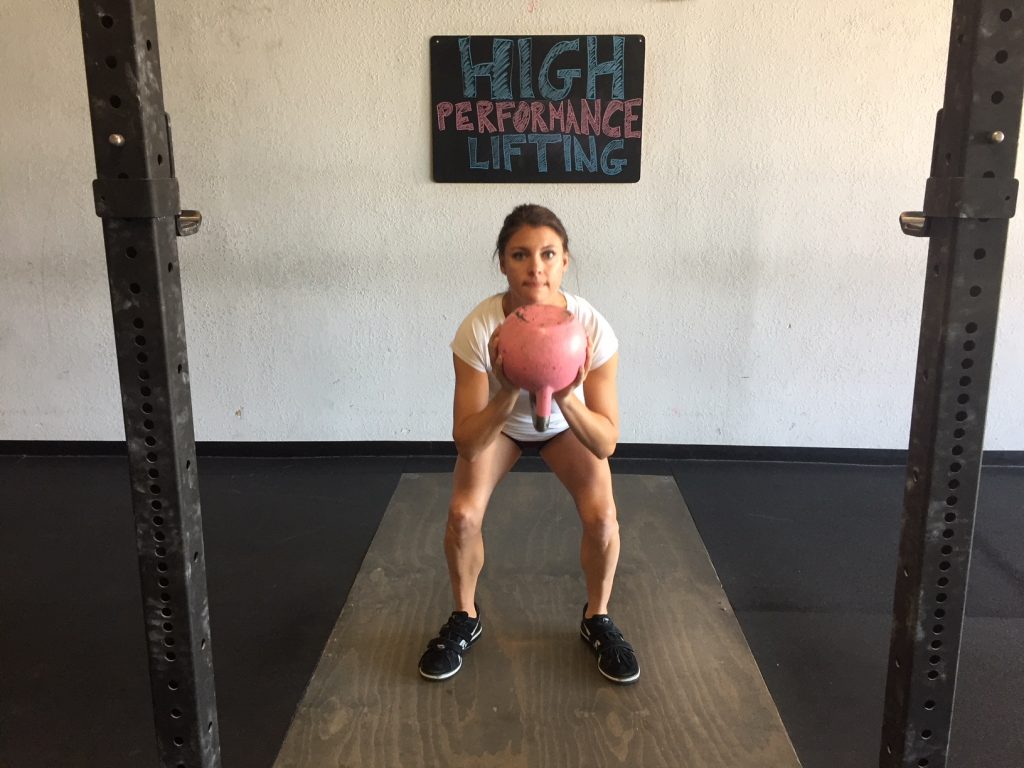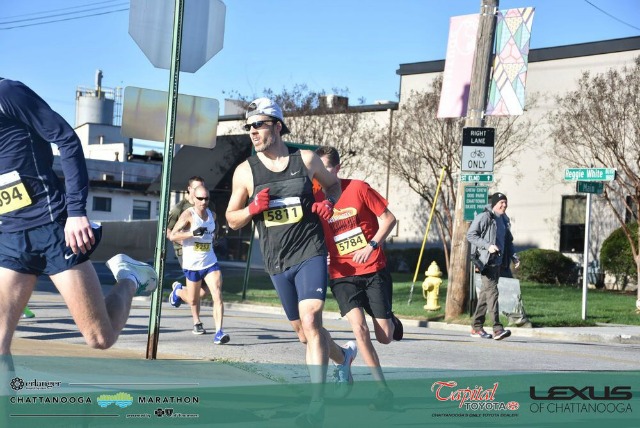Improvement can be a fickle phenomenon. Sometimes you get a lot faster, seemingly out of nowhere! But often you struggle for months without a single sign of progress.

Just the other day I was speaking to a group of pub owners at the Hilton in downtown Denver. Anheuser-Busch invited me to give a presentation about improving performance.
As a coach, that’s my job: harness improvement to help runners perform better.
One of the attendees asked me, “How do you determine HOW you train someone to improve? What do you have that person do?”
It’s a great question for three reasons:
- Often, we don’t know the first step so we don’t start.
- Even when we know what to do, we don’t know what to do first.
- The many options for improvement can be overwhelming.
My answer spoke to a hierarchy of training interventions that are low risk, high reward, and that aren’t currently being utilized in that runner’s training.
Which brings me to the subject of today: James!
You see, James had been doing almost everything right in his running. And it showed in his results (James had run a 17:25 5k!).
But like many runners, he hit a performance plateau. He was stagnating. His finish times weren’t improving anymore.
It didn’t end like that, though. There was a training intervention that James wasn’t using in his running…
This story is about how James turned his running around by incorporating just one new aspect of training.
The result? Three new Personal Bests and feeling better than ever before.
“I Lost Any Pop In My Legs”

Strength training: it works!
James was starting to feel frustrated. He hadn’t run a single Personal Best in a few years and felt like the progression of his training was slowing down.
He sent me this note:
My running had become somewhat stagnant. I was working hard, trying to run more miles and get faster but had lost any pop in my legs. My leg turnover was lost after the mileage.
I felt like I had more speed than I was showing in races and had not set any PR’s in a couple of years.
With his running stagnating, he became a student of the sport. After reading countless articles that spoke to the benefits of weightlifting for runners, he knew it was incredibly valuable.
But couldn’t James just be more consistent with strengthening exercises like squats or the bench press? Hardly. He said:
I had a past track record of getting to a point when I tried to do weights myself but I flaked out when I didn’t see results or wasn’t inventive enough to know what to do next.
Lifting weights is not a “natural” thing for endurance runners. The gym is usually a foreign place… we’d rather be out running!
But James realized that if he was going to escape his cycle of stagnation, he needed something more than “squats and bench press.”
“I Stayed the Faster Version of Me”

Strengthening exercises like the squat are fundamental for runners
One day, I sent James an email about our flagship lifting program High Performance Lifting. He said:
It seemed like the resource I had been searching for. I loved the idea of following a specific, intelligent plan designed for runners to achieve their running goals.
The periodization of the program, matching to a goal race, made sense to me because I do this with running in a training cycle. I thought, if I want to get to the next level of running, I need to move forward with this.
James took the leap and invested in the program. Knowing he needed purpose and organization to his weight training, it was a great fit.
And suddenly, he started realizing how much better he felt after consistently focusing on runner-specific strengthening exercises:
The first immediate change I noticed was an improved ability to explode into a faster interval. I felt I had more push with each stride and my form did not break down as I got further into a workout or race.
I was able to stay the faster version of me for longer.
His new strength allowed James to not only get faster, but run with better form when he’s tired (this is a significant way to prevent injuries!).
James understood that these strengthening exercises were worth it, despite the added demands on his schedule.
Even with a job, a family with three children, and trying to run higher mileage, he started really looking forward to this part of his training.
Watching the PR’s Roll In…

James running his PR marathon last year
Three months after beginning a strength training program built exclusively for runners, James was loving his progress.
Not only that, but he started seeing his new strength as an edge over other runners like him:
I PR’d by almost 40 seconds in the 5k 3 months after starting the program (16:48 from 17:25). My 10K and marathon PRs have improved this year as well: 37:19 to 36:40 and 2:48:54 to 2:48:19 (I got sick 10 days before the race).
In addition, the program is helping me run healthier for more miles as it has strengthened some of my weak spots. I run more upright in workouts and have added weekly miles.
Strength training is one of the edges I have over similar runners because I understand lifting is more key to my performance than a few more miles on the road. I certainly recommend it to someone looking to reach a new place with their goals.
Sometimes, it’s hard to intellectually understand the benefits of strength training:
- lower injury risk
- stronger and more powerful stride
- improved running economy
- faster finish times
Sure, we get that strengthening exercises are important (like how we’re supposed to eat our vegetables). But knowing is not necessarily the same as seeing.
James has personally experienced the transformative benefits of weightlifting. And now that he knows just how much better a runner he can be with strength work, he’s never going back.
Lifting weights is just as important as running. You can’t do the same thing all of the time and expect to grow. This is why the updates that come out with HPL are great. I can continue to progress forward.
I’ve also learned to look at my running as becoming a better overall athlete. The better of an all-around athlete you become, the more you can push yourself. I think this will become even more important as I inch closer to being a Masters athlete.
James is now stronger, faster, and healthier than he has been in quite awhile.
And he’s completely right about strength and athleticism being more important as you get older. In fact, strength training is one of the most effective methods of fighting back against aging!
Now James has a plan to prevent injuries, keep getting faster, and improve his running far into the future.
Register here for Strength Running’s weightlifting guidance to see how James transformed his running.
You’ll learn more about why you should lift, plus common mistakes runners make in the weight room.
And the best part? Just like James noticed, you’ll have a clear “edge” over your competitors when you follow a progressive, periodized, runner-specific strength program.
So sign up here, start lifting, and that next Personal Best will be right around the corner!